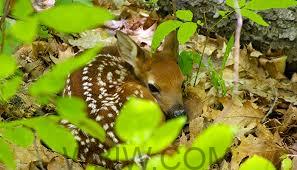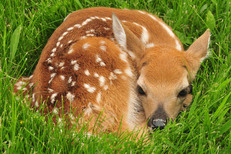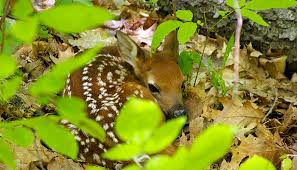
INDIANA – This spring, help the Department of Natural Resources keep wildlife wild and slow the spread of Chronic Waste Disease by leaving fawns be.

During their first few weeks of life, fawns often hide by themselves and stay motionless to avoid predators while the mother is looking for food. Their color pattern and lack of scent help them remain hidden until their mother returns, which is only a few times a day, to reduce the chance of predators discovering them. It is not uncommon for mothers to leave their fawns on urban lawns.
If you find a fawn alone, even on your lawn, help DNR keep wildlife wild by letting it be, giving it space, and leaving the area. Its mother is likely nearby.
If you encounter a fawn that appears to be injured, consider letting the circle of life take its course, as difficult as that decision might be. Sometimes, wildlife can survive even when that potential is not immediately apparent.

Not every baby animal will survive, and those that don’t will become food for another animal. Many animals rely on carcasses as their primary food source.
If you plan to intervene with an injured or orphaned animal, learn about best practices at on.IN.gov/keepwildlifewild.
Help slow the spread of CWD by not moving injured or orphaned fawns found in LaGrange, Steuben, Dekalb, and Noble counties to rehabilitators outside of this four-county area.



